Forays into Fantasy: C. S. Lewis’s The Lion, the Witch and the Wardrobe
Scott Lazerus is a Professor of Economics at Western State Colorado University in Gunnison, Colorado, and has been a science fiction fan since the 1970s. The Forays into Fantasy series is an exploration of the various threads of fantastic literature that have led to the wide variety of fantasy found today, from the perspective of an SF fan newly exploring the fantasy landscape. FiF will examine some of the most interesting landmark books of the past, along with a few of today’s most acclaimed fantasies, building up an understanding of the connections between fantasy’s origins, its touchstones, and its many strands of influence.
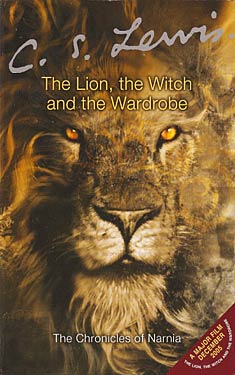 Between them, J. R. R. Tolkien and C. S. Lewis have been credited with reinventing and reinvigorating fantasy literature for the second half of the twentieth century, both creatively and, ultimately, commercially. Amazingly, the two writers most influential on modern fantasy were both professors of medieval language and literature at Oxford University, as well as being good friends, during the period in which they wrote, respectively, The Lord of the Rings and The Chronicles of Narnia. Both were members of an informal reading and writing group known as the Inklings, where they discussed their works in progress and their ideas about fantasy. The two were also bound by the shared experience of fighting in the trenches of World War I, and by their devotion to Christianity. In 1931, Tolkien was among those who helped convert the atheist Lewis, though Lewis did not embrace Tolkien’s Catholicism. The religious background of an author is not something that will come up often in my survey of fantasy, but in this case it is relevant to an understanding of Lewis’s work, nearly all of which is related to his religious ideas in some way.
Between them, J. R. R. Tolkien and C. S. Lewis have been credited with reinventing and reinvigorating fantasy literature for the second half of the twentieth century, both creatively and, ultimately, commercially. Amazingly, the two writers most influential on modern fantasy were both professors of medieval language and literature at Oxford University, as well as being good friends, during the period in which they wrote, respectively, The Lord of the Rings and The Chronicles of Narnia. Both were members of an informal reading and writing group known as the Inklings, where they discussed their works in progress and their ideas about fantasy. The two were also bound by the shared experience of fighting in the trenches of World War I, and by their devotion to Christianity. In 1931, Tolkien was among those who helped convert the atheist Lewis, though Lewis did not embrace Tolkien’s Catholicism. The religious background of an author is not something that will come up often in my survey of fantasy, but in this case it is relevant to an understanding of Lewis’s work, nearly all of which is related to his religious ideas in some way.
Given their many affinities, then, it may come as a surprise that Tolkien expressed strong dislike for The Lion, the Witch and the Wardrobe (1950), and the six subsequent Narnia volumes. Yet comparing it to Tolkien’s work may explain why. Tolkien, after all, is heralded as the master of what has come to be known as world-building, spending years inventing the languages, history, and geography of Middle Earth prior to writing The Lord of the Rings. This world building is probably the most influential aspect of his work, its popularity creating a large readership that would subsequently be accustomed to accepting secondary world fantasies—stories set in imagined lands with no necessary connection to ours—as a genre in itself. Fans demanded more of it, leading to the fantasy publishing boom that began after the paperback publication of The Lord of the Rings in the late ‘60s.
 Lewis’s Narnia, on the other hand, comes across as slapdash by comparison, with its talking animals, dryads and mermaids, fauns and giants, witches and demons, all thrown together with the Christ-lion Aslan (Turkish for lion) in the fantasy land of Narnia. Lewis and Tolkien were both lovers and scholars of mythology, but they used it in very different ways, Tolkien building up a consistent and explainable alternate mythology, while Lewis seemed to impulsively pick and choose bits and pieces from wherever he wanted. It should be remembered, however, that Lewis was writing for young children, whereas Tolkien pursued a more mature audience. From a child’s perspective, why shouldn’t a fantasy land contain a wicked witch alongside a family of talking beavers, and feature a seemingly random encounter with Santa Claus? All the creatures in The Lion, the Witch and the Wardrobe, along with the Christian allegorical aspects, would have already been part of a child’s imaginative world, and combining it all into a single story where any type of wonderful character might be encountered was certainly part of the appeal. For a nine-year-old already familiar with The Wizard of Oz, Alice in Wonderland, and The Wind in the Willows, among other childhood stories, Lewis’s Narnia seemed to me at that age like fantasy of a higher order.
Lewis’s Narnia, on the other hand, comes across as slapdash by comparison, with its talking animals, dryads and mermaids, fauns and giants, witches and demons, all thrown together with the Christ-lion Aslan (Turkish for lion) in the fantasy land of Narnia. Lewis and Tolkien were both lovers and scholars of mythology, but they used it in very different ways, Tolkien building up a consistent and explainable alternate mythology, while Lewis seemed to impulsively pick and choose bits and pieces from wherever he wanted. It should be remembered, however, that Lewis was writing for young children, whereas Tolkien pursued a more mature audience. From a child’s perspective, why shouldn’t a fantasy land contain a wicked witch alongside a family of talking beavers, and feature a seemingly random encounter with Santa Claus? All the creatures in The Lion, the Witch and the Wardrobe, along with the Christian allegorical aspects, would have already been part of a child’s imaginative world, and combining it all into a single story where any type of wonderful character might be encountered was certainly part of the appeal. For a nine-year-old already familiar with The Wizard of Oz, Alice in Wonderland, and The Wind in the Willows, among other childhood stories, Lewis’s Narnia seemed to me at that age like fantasy of a higher order.
Another reason for the appeal, and for the subsequent influence of the series, is the way in which Lewis heightens the book’s imagery by combining the realistic with the fantastic. Even before rereading it for the first time since that initial encounter, I could vividly remember the opening chapters of The Lion, the Witch and the Wardrobe, which I first heard read aloud to my fourth grade class: the four Pevensie children, separated from their parents after being sent to a country house to escape the London bombings of World War II, discovering the wardrobe portal to Narnia as they explore their new home; the sensation of the fabric of the coats in the back of the dark wardrobe giving way to the feel of tree branches; the strange change of seasons, as we find that Narnia has become a land of eternal winter; the initial encounters of Lucy with the faun Tumnus and Edmund’s with the evil White Witch; and the odd image of the lamppost in the snow outside the wardrobe portal—it was these juxtapositions of the mundane and the fantastic that seemed so thrilling and intriguing, and which sent me to the library to find the remaining books in the series.
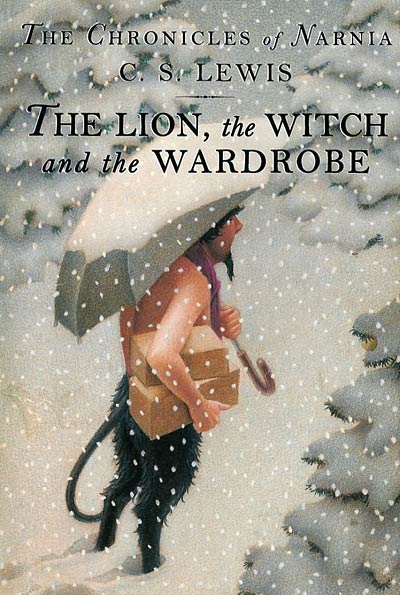 Clearly, Lewis struck a chord with children, as the book and series have remained continuously in print, selling over 100 million copies in dozens of languages, and having recently been given a new lease on life by an ongoing series of films. Reading and reevaluating it today, it’s important to keep its intended audience in mind (it’s subtitled “A Story for Children”, after all). As I’m sure my fourth grade teacher was aware in choosing to read it to my class, age nine is probably about the right age at which to encounter it. Tolkien’s apparent objection to the mish-mash of mythological influences might seem pointless to young readers, but his point is quite valid for fantasy readers looking for interesting and consistent world-building, and who may wonder what Lewis is trying to get at with this approach.
Clearly, Lewis struck a chord with children, as the book and series have remained continuously in print, selling over 100 million copies in dozens of languages, and having recently been given a new lease on life by an ongoing series of films. Reading and reevaluating it today, it’s important to keep its intended audience in mind (it’s subtitled “A Story for Children”, after all). As I’m sure my fourth grade teacher was aware in choosing to read it to my class, age nine is probably about the right age at which to encounter it. Tolkien’s apparent objection to the mish-mash of mythological influences might seem pointless to young readers, but his point is quite valid for fantasy readers looking for interesting and consistent world-building, and who may wonder what Lewis is trying to get at with this approach.
Some have interpreted the world-building problems, which include some inconsistencies within the series, as being the result of rapid composition and lack of attention to detail. There may be something to this—all seven novels were written between 1949 and 1954, and publication was complete by 1956, and it’s not clear that Lewis had the entire arc of the series in mind when he wrote the first book—but I think the world he did build is consistent with Lewis’s own interests and thus the aspects Tolkien and others have objected to were to some extent quite deliberate.
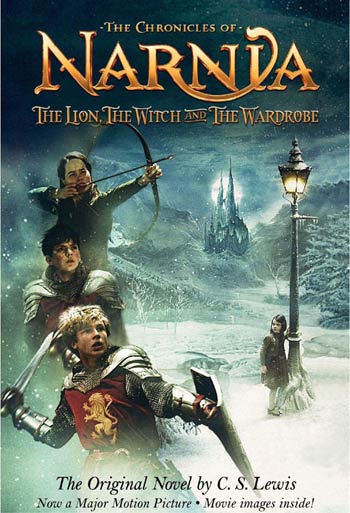 Lewis’s conversion to Christianity came when Tolkien and other friends convinced him that Christian belief was not inconsistent with his continued devotion to his beloved world of mythology. Specifically, Lewis came to believe the Pagan gods of the Greeks and Romans were based on a partial or incomplete revelation of the Christian truth to these cultures, thus giving mythology and fable some validity within his Christian worldview. From this perspective, the appearance of Bacchus, along with fauns, dryads, fairy tale characters and other mythological manifestations, in the same world he would use to relate a Christian allegory, does not seem so incongruous. It also explains why many childhood readers of the series (myself included) were surprised to learn later of the Christian basis for the story, mixed in as it is with so many aspects that would seem completely unrelated to Christianity.
Lewis’s conversion to Christianity came when Tolkien and other friends convinced him that Christian belief was not inconsistent with his continued devotion to his beloved world of mythology. Specifically, Lewis came to believe the Pagan gods of the Greeks and Romans were based on a partial or incomplete revelation of the Christian truth to these cultures, thus giving mythology and fable some validity within his Christian worldview. From this perspective, the appearance of Bacchus, along with fauns, dryads, fairy tale characters and other mythological manifestations, in the same world he would use to relate a Christian allegory, does not seem so incongruous. It also explains why many childhood readers of the series (myself included) were surprised to learn later of the Christian basis for the story, mixed in as it is with so many aspects that would seem completely unrelated to Christianity.
Upon rereading it, this aspect of The Lion, the Witch and the Wardrobe did become obvious. Aslan, the Christ figure, allows himself to be sacrificed in order to save Edmund, who has betrayed his siblings by helping the White Witch in exchange for magical candy and to get back at them for condemning his mean behavior. The Witch claims Edmund’s life under the rules of “Deep Magic from the Dawn of Time,” but is not aware that Aslan has access to “Deeper Magic from Before the Dawn of Time,” which results in the lion’s resurrection, leading in turn to the reclamation of Narnia from the Witch’s spell, the thawing of the multitude of creatures the Witch has turned to stone (one of the most memorable images in the novel), and the return of summer. Aslan dies for Edmund’s sins and is resurrected, but the death and rebirth of characters is not unusual in fantasy, and the story works just as well for readers unaware or uninterested in the Christian aspects. The message of the story could just as well be interpreted as a process of Edmund learning the error of his ways, as he will become an important character in the remainder of the series.
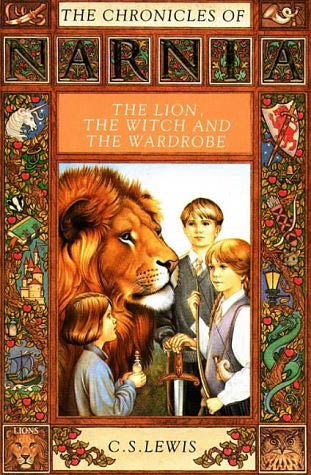 The religious themes are also revisited throughout the series, especially in The Magician’s Nephew (1955) and The Last Battle (1956), which tell of Narnia’s creation by Aslan and its end, when the various characters of the series receive Aslan’s Judgment. Part of the reason for the series’ continuous sales success, despite seeming somewhat old-fashioned today, is its embrace by a large segment of the Christian readership. But this acceptance is not without controversy, as Lewis’s mixing of magic and witches with the Christian aspect does not sit well with some of the same people who have condemned the Harry Potter series (and fantasy in general) for indoctrinating children into the ways of the occult.
The religious themes are also revisited throughout the series, especially in The Magician’s Nephew (1955) and The Last Battle (1956), which tell of Narnia’s creation by Aslan and its end, when the various characters of the series receive Aslan’s Judgment. Part of the reason for the series’ continuous sales success, despite seeming somewhat old-fashioned today, is its embrace by a large segment of the Christian readership. But this acceptance is not without controversy, as Lewis’s mixing of magic and witches with the Christian aspect does not sit well with some of the same people who have condemned the Harry Potter series (and fantasy in general) for indoctrinating children into the ways of the occult.
Critics, writers, and readers of fantasy are also not unanimous in their praise of Lewis’s work. Philip Pullman’s His Dark Materials trilogy has been seen as a sort of rebuttal to Lewis’s religiosity, which Pullman has criticized. In particular, the idea that Susan Pevensie is not allowed into heaven by Aslan, as a result of her embrace of the worldly pleasures of Earth (boys, lipstick and nylons) over the spiritual world of Narnia, has been pointed to by Pullman and others. Neil Gaiman asks readers to examine the cruelty of this finale in his story “The Problem of Susan” (included in his collection Fragile Things). Most recently, Lev Grossman’s Fillory series is set in a Narnia-like world in which some of the darker aspects of Lewis’s creation are brought to the fore. The variety of reactions to Narnia’s influence on fantasy arise in part from Lewis’s failure to grapple with some of the moral ambiguities raised by the stories, or from the fact that his own brand of morality can lead in uncomfortable directions for those who do not uncritically share it.
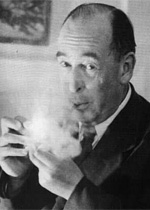 The dark undercurrent is apparent in The Lion, the Witch and the Wardrobe. Amidst the whimsical talking animals and the children’s adventure, Aslan, the Pevensies, and their friends engage in a battle to the death with the Witch and her followers. The oldest boy, Peter, has been presented with a sword which he uses to kill Aslan’s enemies, forced into this violent encounter in part to indicate his fitness to become a Narnian king. While the battle rages, Aslan encourages Susan and Lucy to witness his execution at the hands of the Witch’s minions, which they endure while hiding in the damp and discomfort of the forest through which they have followed the lion. Both of these scenes lead into the ultimate triumph of the forces of good, and the book’s climax is moving as a result, but not all parents will appreciate the violence and fear endured by the young characters.
The dark undercurrent is apparent in The Lion, the Witch and the Wardrobe. Amidst the whimsical talking animals and the children’s adventure, Aslan, the Pevensies, and their friends engage in a battle to the death with the Witch and her followers. The oldest boy, Peter, has been presented with a sword which he uses to kill Aslan’s enemies, forced into this violent encounter in part to indicate his fitness to become a Narnian king. While the battle rages, Aslan encourages Susan and Lucy to witness his execution at the hands of the Witch’s minions, which they endure while hiding in the damp and discomfort of the forest through which they have followed the lion. Both of these scenes lead into the ultimate triumph of the forces of good, and the book’s climax is moving as a result, but not all parents will appreciate the violence and fear endured by the young characters.
It’s difficult to know how to respond, then, to the strange mix of ingredients C. S. Lewis combines in his beloved series, and this ambivalence is apparent in the wide range of reactions to it. The wonder of the childhood reading may give way to questions and criticisms for older readers, but the influence and inspiration of the novels on the fantasy genre is undeniable. One mark of an important literary work is the range of reactions to it, positive and negative. The importance of The Lion, the Witch and the Wardrobe lies in the fact that modern fantasy continues to engage with it, and even those who dislike aspects of its influence are moved to try to counter it. While the effect will be much stronger on its intended audience of young children, its power is hard to deny.



















 Full Details
Full Details


No comments yet.
Sorry, the comment form is closed at this time.